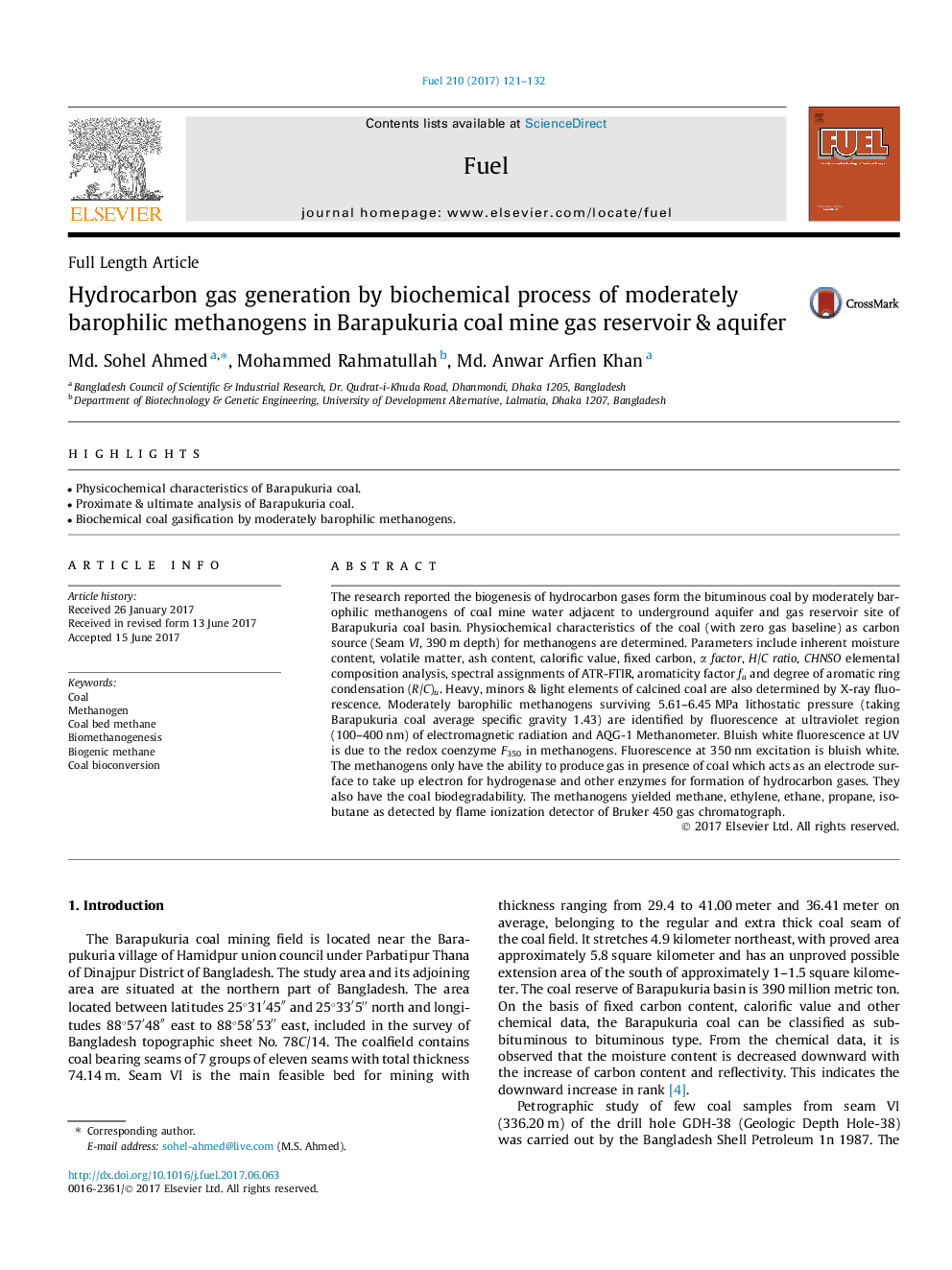| Article ID | Journal | Published Year | Pages | File Type |
|---|---|---|---|---|
| 4768309 | Fuel | 2017 | 12 Pages |
Abstract
The research reported the biogenesis of hydrocarbon gases form the bituminous coal by moderately barophilic methanogens of coal mine water adjacent to underground aquifer and gas reservoir site of Barapukuria coal basin. Physiochemical characteristics of the coal (with zero gas baseline) as carbon source (Seam VI, 390 m depth) for methanogens are determined. Parameters include inherent moisture content, volatile matter, ash content, calorific value, fixed carbon, α factor, H/C ratio, CHNSO elemental composition analysis, spectral assignments of ATR-FTIR, aromaticity factor fa and degree of aromatic ring condensation (R/C)u. Heavy, minors & light elements of calcined coal are also determined by X-ray fluorescence. Moderately barophilic methanogens surviving 5.61-6.45 MPa lithostatic pressure (taking Barapukuria coal average specific gravity 1.43) are identified by fluorescence at ultraviolet region (100-400 nm) of electromagnetic radiation and AQG-1 Methanometer. Bluish white fluorescence at UV is due to the redox coenzyme F350 in methanogens. Fluorescence at 350 nm excitation is bluish white. The methanogens only have the ability to produce gas in presence of coal which acts as an electrode surface to take up electron for hydrogenase and other enzymes for formation of hydrocarbon gases. They also have the coal biodegradability. The methanogens yielded methane, ethylene, ethane, propane, iso-butane as detected by flame ionization detector of Bruker 450 gas chromatograph.
Related Topics
Physical Sciences and Engineering
Chemical Engineering
Chemical Engineering (General)
Authors
Md. Sohel Ahmed, Mohammed Rahmatullah, Md. Anwar Arfien Khan,
